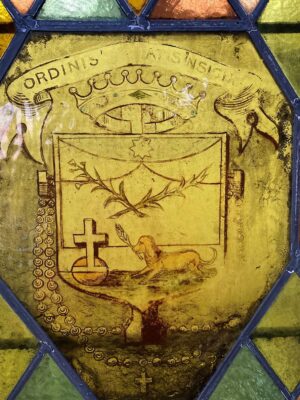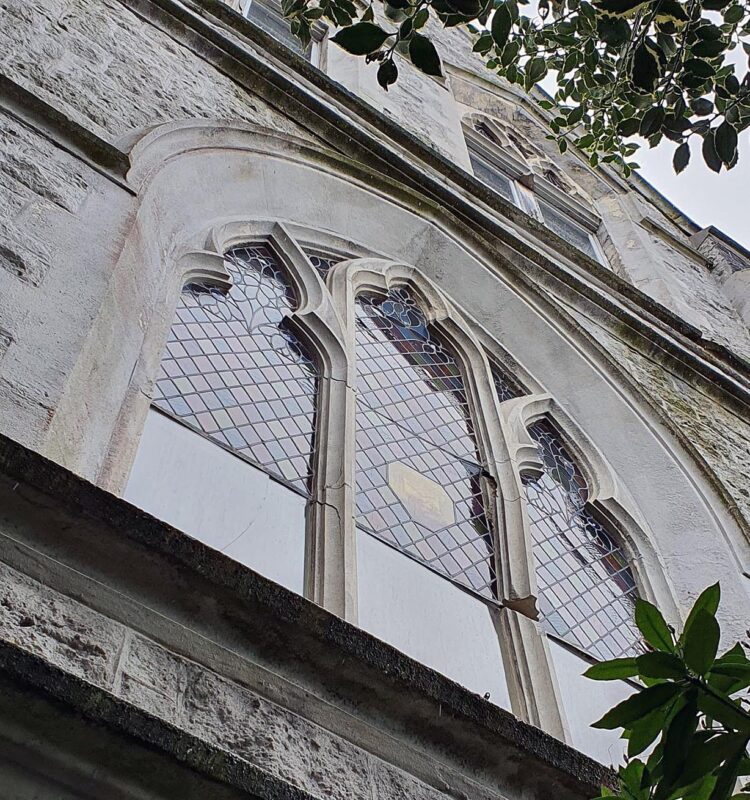by JEFF DILLON
The project undertaken recently to save and restore a significant stained glass window in the former Dominican Priory beside Dunedin’s St Joseph’s cathedral has produced a little mystery which begs to be solved.
The window is located on the south wall facing the steps leading up to the cathedral. It was in the section of the priory that was added and opened in 1890 for more classrooms for the school staffed by the Dominican Sisters.
In recent years, it was noticed that the window was under severe stress and in danger of catastrophic collapse. The leadlight window is in three large sections, and is approximately 2.5 metres in length at the base and about 3.5 metres high from the base to the apex of the arch, and is very heavy.
The Dunedin Heritage Committee committed to putting the funding in place to save the window and fully restore it. The priory is a Category 1 building, and the window is viewed as a vital integral element in the building. Funding of $60,000 has been promised to the Diocese of Dunedin to enable the work to be done. The initial step was to put up bracing to stop the window collapsing. Once things could be organised, the three distinct panels were carefully removed in a delicate operation, and have been taken to Kevin Casey, a local stained glass expert craftsman.
It is thought that, at some stage, the lowest section of each panel had had original coloured glass removed for some reason and replaced with clear glass.
Mr Casey is tasked with sourcing similar coloured glass to repair damaged pieces and restore those three lower sections. Some glass will be sourced within New Zealand, some will be found in Australia, and some may have to come from the United States. Under present restricted conditions, that alone may take six months.
Sean Toomey, the priory project manager, indicated that the scaffolding and plywood covering could be in place for up to a year. The scaffolding and covering are supporting the integrity of the window frame, since the central mullions are broken and no longer there.
Once the window panels are fully restored, then stone masons will come in and cut out deteriorating sections of Oamaru stone in the frame and replace them with newly-carved pieces. The window sections and new mullions can then go back in. Again, that is a delicate operation involving putting in one side of the frame blocks. Then placing the window panels, in followed by securing the other side of the frame blocks plus the central mullions in place to encase the windows.

The mystery markings in the stained glass
(image flipped for readability).
Mr Toomey is particularly puzzled by an unusual element in the window. There is a special central glass portion which has been created using two thin panes. On one appear some details inked in on the glass, while on the other colour has been used. Then the two panes have been sealed together. Unfortunately, the seals around it have degraded over time and moisture has got in and some details have been affected.
“Why is it there and where did it come from? It must have represented something very important when it went in, but we don’t know,” said Mr Toomey. He said that, so far, no one has been able to explain the details. While there are indications that some details seem to relate to St Dominic there is no complete understanding of what it all represents. He would love to hear from anyone who can offer some further insights.

Reader Interactions